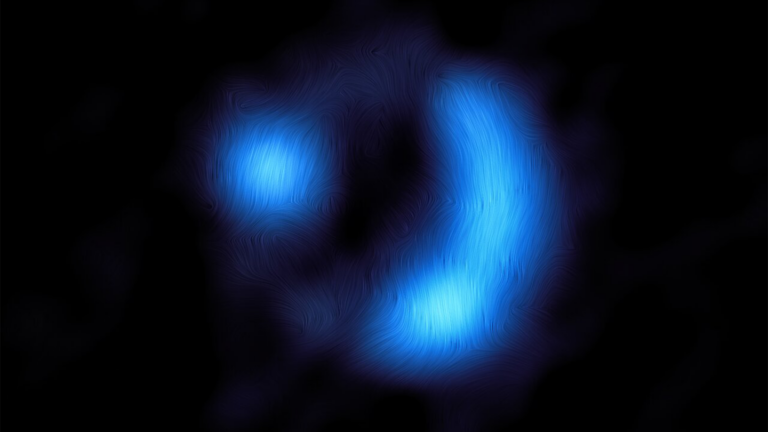Astronomers have successfully observed the magnetic field of a remote galaxy for the very first time.
The light from galaxy 9io9 took over 11 billion years to reach Earth.
A galaxy located at a significant distance from Earth has had its magnetic field detected by astronomers utilizing the Atacama Large Millimeter/submillimeter Array (ALMA) radio telescope. The light from this galaxy has traveled for over 11 billion years to reach us, allowing us to observe it as it existed when the universe was merely 2.5 billion years old. The results of this discovery have been outlined in a research paper published on September 6 in the journal Nature.
This observation of the cosmic phenomenon could potentially provide astronomers with crucial insights into the origins of magnetic fields in galaxies such as our own Milky Way.

Magnetic fields are a common feature found in various astronomical entities within the universe, ranging from stars to planets and extending to galaxies.
The entire galaxy, along with other galaxies, is interwoven with magnetic fields that stretch across tens of thousands of light-years, as mentioned by study co-author and astrophysicist James Geach from the University of Hertfordshire. The formation of these magnetic fields in galaxies, both in terms of timing and speed, remains a mystery. So far, astronomers have only been able to map out magnetic fields in galaxies that are in close proximity to us.
Despite the fundamental role that these magnetic fields play in the evolution of galaxies, there is still a lack of understanding regarding their formation, as highlighted by study co-author and extragalactic astronomer Enrique Lopez Rodriguez from Stanford University.
In a recent study, the research team utilized data from ALMA and the European Southern Observatory (ESO) to identify a fully developed magnetic field in a distant galaxy. This magnetic field bears a resemblance in structure to those observed in nearby galaxies. Although the magnetic field in this distant galaxy is approximately 1,000 times weaker than Earth’s magnetic field, it spans over a distance of more than 16,000 light-years.
The team suggests that the rapid formation of magnetic fields in fully developed galaxies during the early stages of the universe could be attributed to the intense star formation that occurred. These magnetic fields are believed to have an impact on the formation of stars in subsequent generations.
The team was able to identify the light emitted by dust grains in the distant galaxy 9io9. Dust grains in galaxies tend to align in the presence of a magnetic field, causing the light they emit to become polarized. This polarization indicates that the light waves are oscillating along a specific direction rather than randomly. ALMA’s detection and mapping of the highly polarized signal from galaxy 9io9 confirmed the existence of a magnetic field in a galaxy located very far away, possibly for the first time.
Geach stated, “No other telescope could have accomplished this.”
With this groundbreaking discovery and the prospect of future observations of magnetic fields in distant galaxies, astronomers are hopeful that they will gain a better understanding of how essential components of galaxies come into existence.
Do not forget to share your opinion with us to provide you with the best posts !




0 Comments